The Robots Are Coming. Befriend Them While You Can.
A caveat: I’m not an Artificial Intelligence (AI) expert – far from it. I’m just super curious how AI will continue to impact our industry. The robots are coming for our jobs, and I want to help fight them off as long as I can. That’s a joke. Kind of.
What’s Going On?
Today is February 14, 2023. I’m writing that up front because what follows could be old news by February 15, 2023. That’s the nature of AI. Besides getting more popular, AI is getting much better, smarter, faster and a bunch of other words ending in -er. But the chatter has recently reached a fever pitch – especially in our industry – as ChatGPT, DALL-E 2, and a bunch of other AI models have invaded our feeds, conversations and client calls. Just this week (see I told you things are moving at hyperspeed), Google unveiled its ChatGPT rival, Bard. This is the first time I’ve heard about it, but with Google’s deep pockets, it’s surely not the last.
From an art perspective, DALL-E 2, Stable Diffusion and Midjourney are leading the race so far I’ll talk about DALL-E 2 since it’s currently the most popular. In its simplest terms, DALL-E 2 makes it easy for anyone to create lifelike visuals with a simple text prompt. Want to see “A stained glass window depicting a hamburger and French fries?” How about “An astronaut lounging in a tropical resort in space?” What if you’re curious about “A sunlit indoor lounge area with a pool with clear water and another pool with translucent pastel pink water, next to a big window, digital art?” In only a few seconds you can have exactly that. Seriously – here you go.
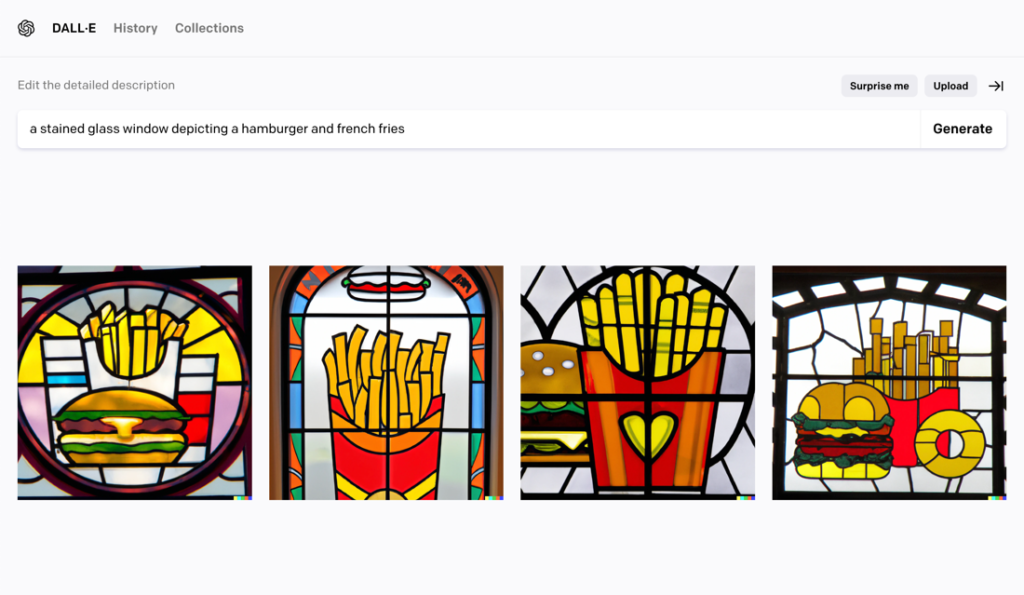
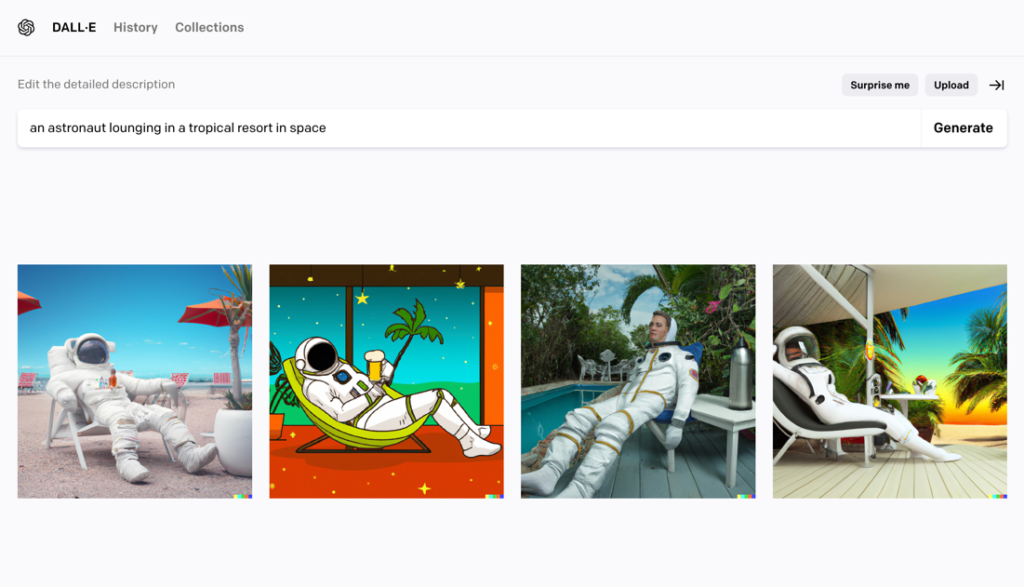
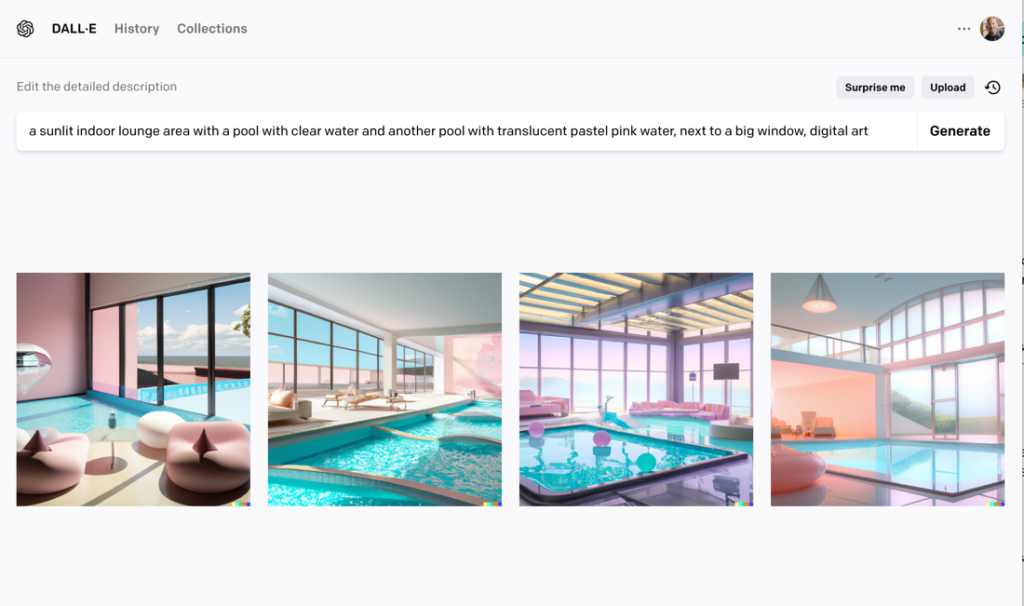
DALL-E 2 is getting so good that somebody in Colorado won an art contest using AI. And the piece of art is phenomenal. Here, take a look for yourself:
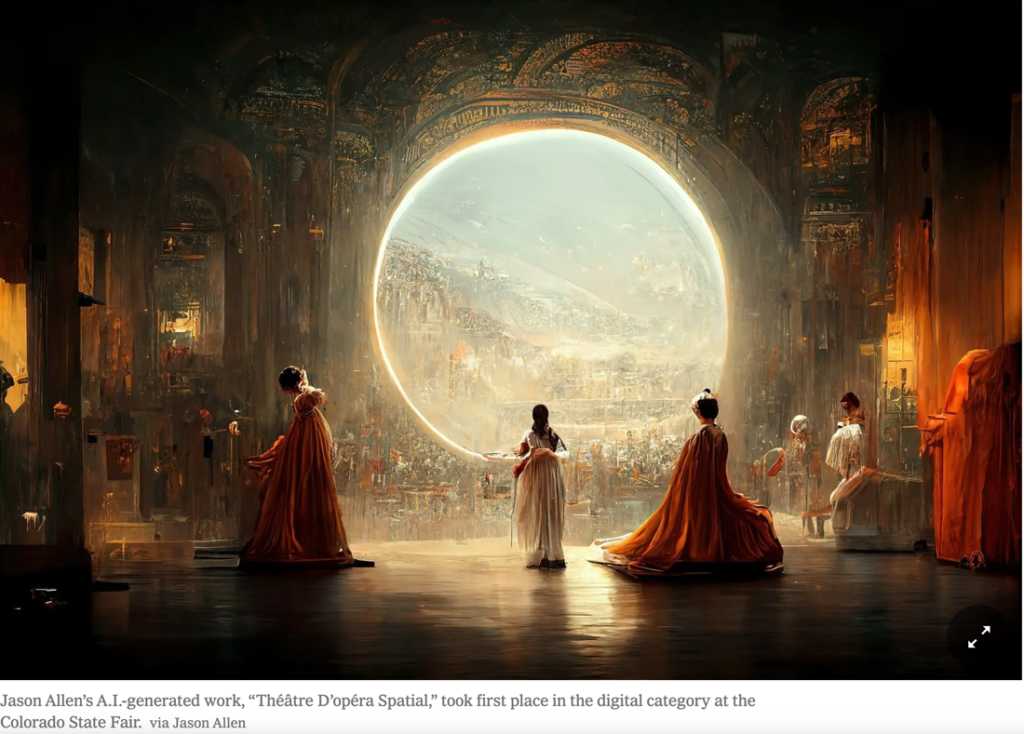
You know the robots high-fived each other after that victory. But the humans were – and are – not happy. And they’re getting more upset because of the enormous ethical concerns surrounding AI. See, AI creates output similar to the input it was trained on, which is very often not approved by the artists beforehand. This has already led to attribution and copyright infringements. Not to mention being detrimental to actual human artists who work tirelessly to create real works of art only to be undermined by somebody who, in seconds, simply types in a series of prompts and creates a piece of “art” that they can sell themselves.
And that’s just the art side. Writing has its own AI all-stars, including ChatGPT, Jasper AI and, as of this week, Google Bard.
For the uninitiated, ChatGPT is the buzzy chatbot developed by OpenAI that is capable of writing cogent essays, solving science and math problems and producing functional computer code. Users simply instruct a machine what to write and in return receive a detailed and grammatically sound (but not always factually correct) passage in mere seconds.
Why Does It Matter?
Without sounding hyperbolic, this changes everything. The New York Times said, “This isn’t just another entry in the AI hype cycle. It’s a significant advancement that can produce articles in response to open-ended questions that are comparable to good high school essays.” Um, wow.
Just how popular is ChatGPT?
It took Netflix three years to hit one million users.
It took Facebook 10 months.
It took Spotify five months.
It took ChatGPT five days.*
*It’s estimated to have reached 100 million monthly active users in January 2023, just two months after its launch, making it the fastest-growing consumer app in history.
Now is probably a good time to mention this AI thing is not a trend. Mark Curtis, head of innovation at Accenture Song, said, “Generative AI is likely the most important technological shift I’ve catalogued in the last five to 10 years.” As noted, AI has been around for decades. It’s just that over the past few years it’s gotten soooo good and accessible that we can all now use it for just about anything in our daily lives – and our jobs – including storyboards, comps, mood boards, pitch decks, generating blog entries, writing headlines and suggesting content calendars (among many, many, many other things).
Speaking of, I wanted to thank a co-worker for a job well done. Boom. Done.
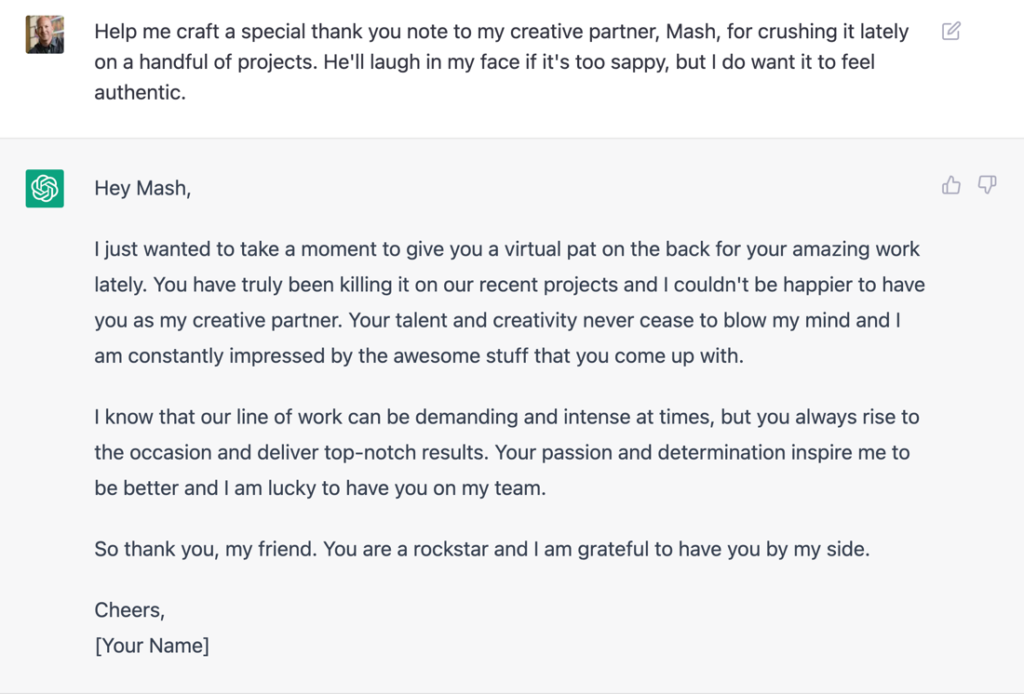
Then I also asked ChatGPT to write our agency a short and catchy fight song using the theme uncomfortably ambitious knowing our mascot is a lion. That was too easy.

Want it to write code, practice Spanish convos, figure out a meal plan or workout plan or business plan? Done, done and done. Need it to act as a therapist, provide interviewing advice or write a detailed college essay? In a few simple keystrokes, all of that is possible. Basically, you can have ChatGPT write you or teach you almost anything you can imagine. It’s getting so advanced that Google’s management has reportedly issued a “Code Red” amid the rising popularity of ChatGPT, worried that it could one day replace Google’s search engine, a thought that was completely unfathomable mere months ago.
But it’s not all roses with AI. Besides the obvious worries about plagiarism and attribution/copyright infringement, there is also a massive misinformation problem with ChatGPT. As of right now, ChatGPT doesn’t cite sources. It could pull an answer from a wide variety of sources to give you a complex answer. But how do you know which part is accurate and which part isn’t? You don’t. That fact alone is not only scary but is giving all company lawyers the heebie-jeebies. AI, as lūquire’s very own Matt Kaupa said, is the lawless guest in our pockets.
What Should Advertisers Be Doing About It?
So, after we finish being amazed by the limitless possibilities of AI, the question we’re all asking remains: Should we be worried that robots are coming after our jobs? The answer is a resounding no. One group strategy director in our industry said, “AI is not even close to replacing creative thinking. In fact, I’d say it exposes how valuable true creative thinking actually is. It puts the difference between original, creative thought and eloquently constructed database information in plain sight.” Another chief experience officer noted, “AI is going to make good people better. And it’s going to actually weed out a lot of the people who think they can use it as a free ride.”
So, where do we, as advertisers, go from here? Well, we should definitely keep experimenting with the DALL-E 2s and ChatGPTs of the world, as many agencies around the globe have already done. Use them in brainstorms. Use them to help you flesh out a nebulous, half-baked thought. Use them to help with a comp. Use them to suggest some headline options or ideate around content creation. Most of all, use them to your advantage.
And know that it’s all just getting started. One head of innovation said, “Now it’s beginning to head toward video, and then it’ll go 3D. We’ve had to continuously rewrite this trend over the last month and a half because new stuff was coming up. And I worry that everything we’re going to say is going to be irrelevant by February.”
The robots aren’t just coming. They’re already here. Make friends with them while you can.

